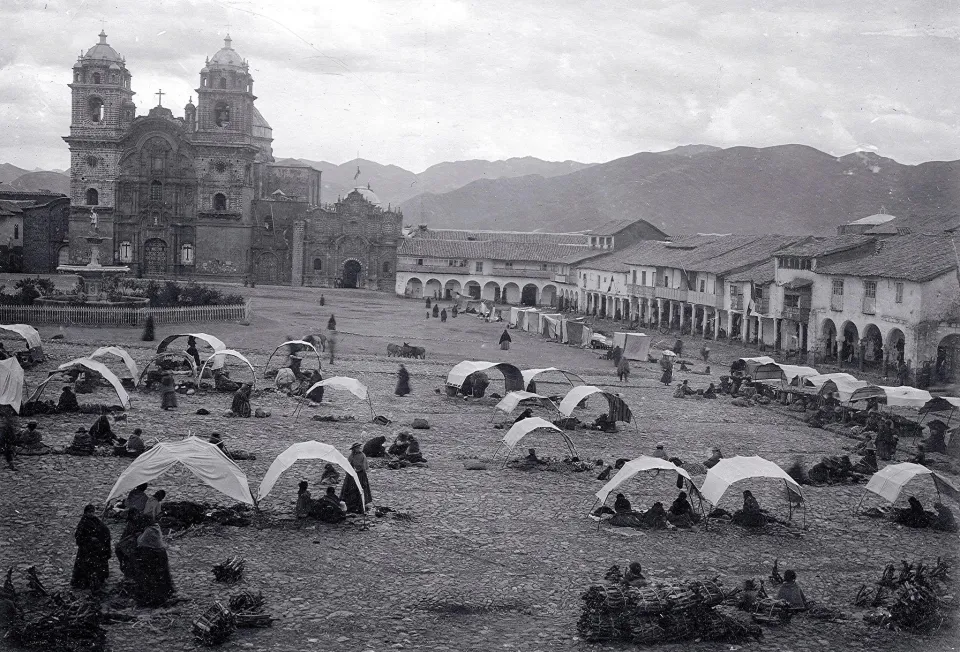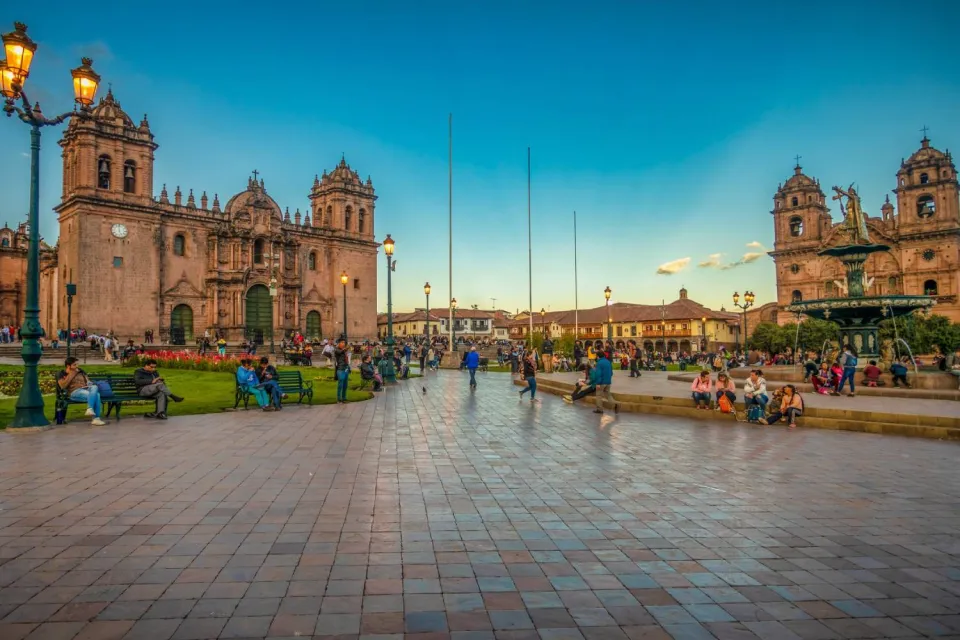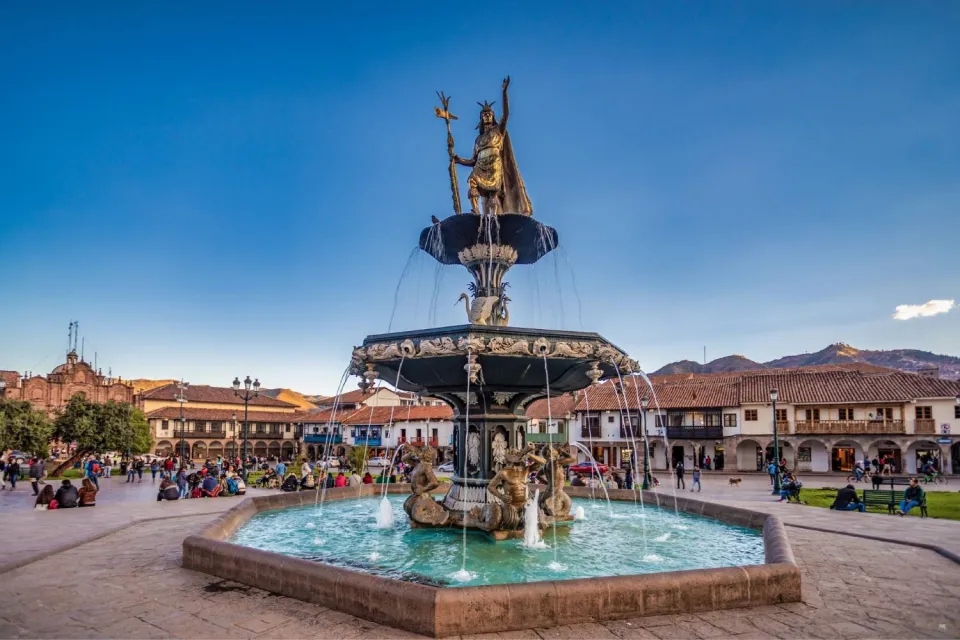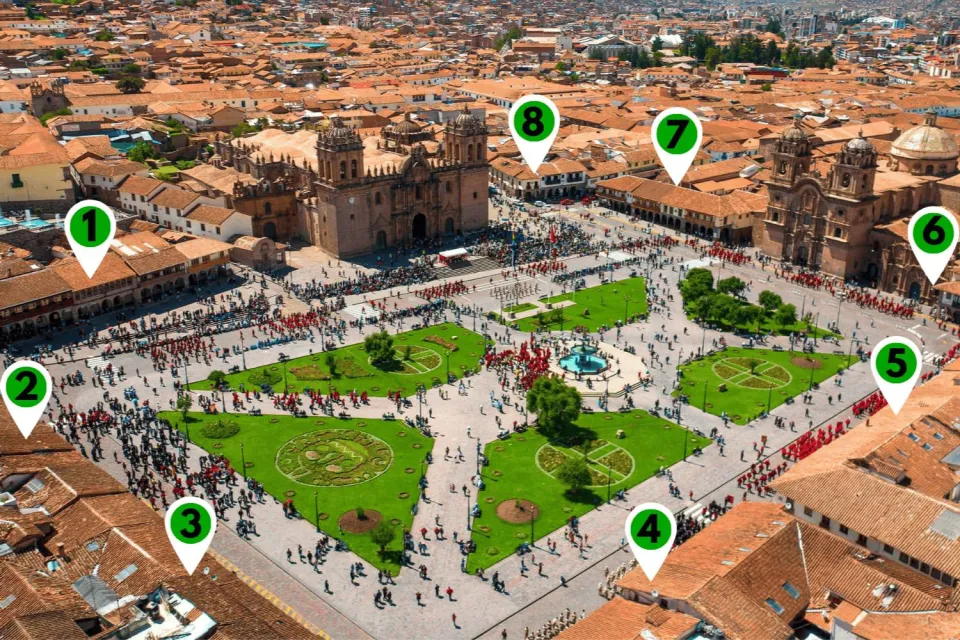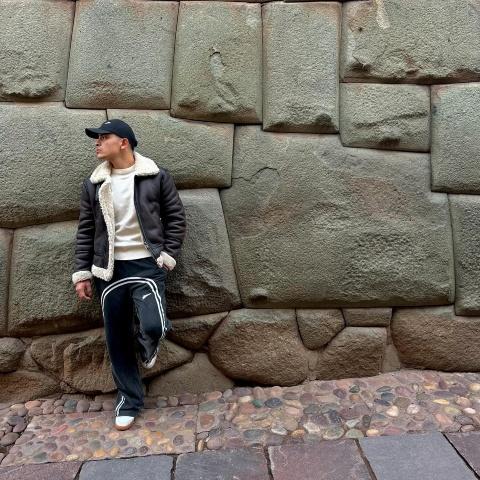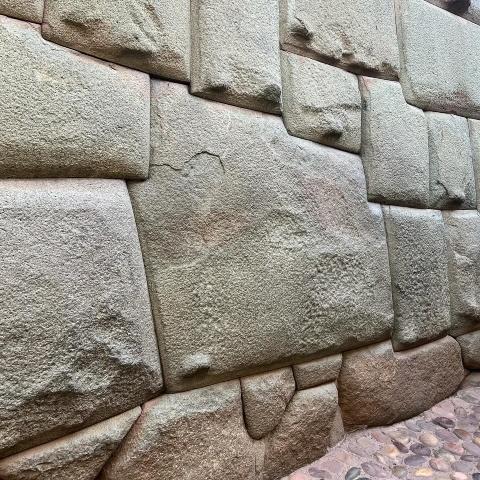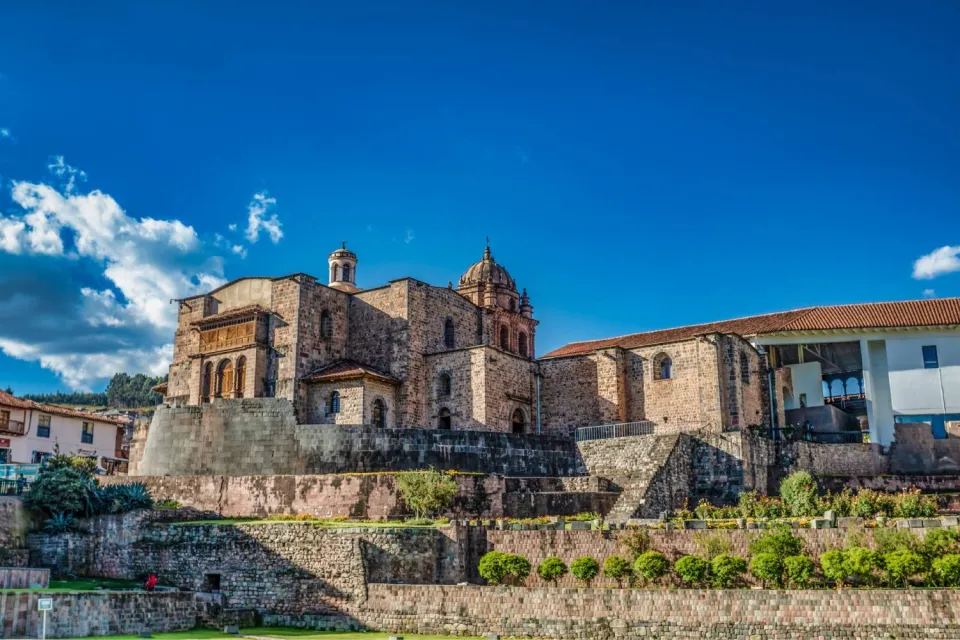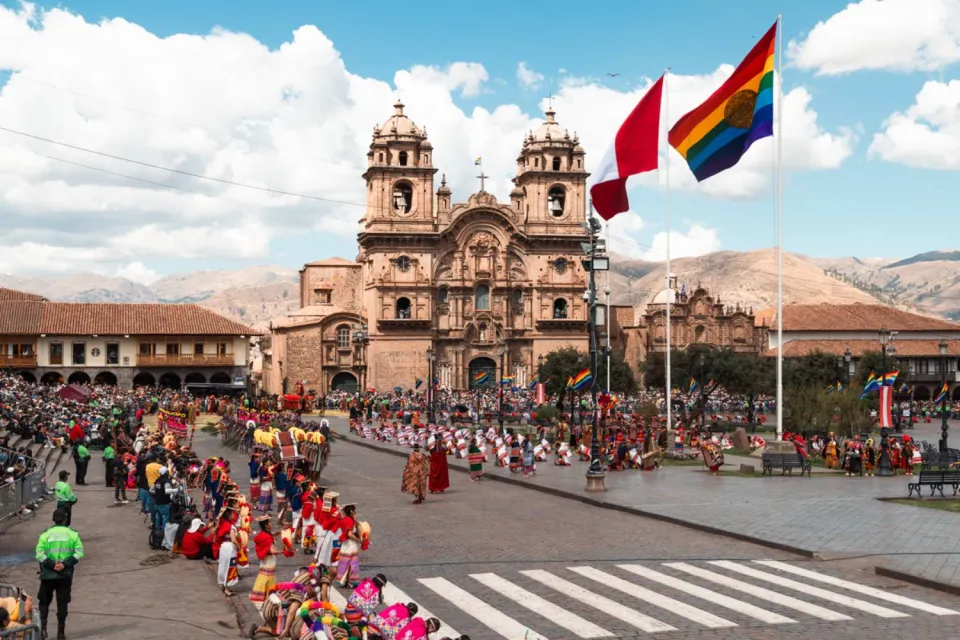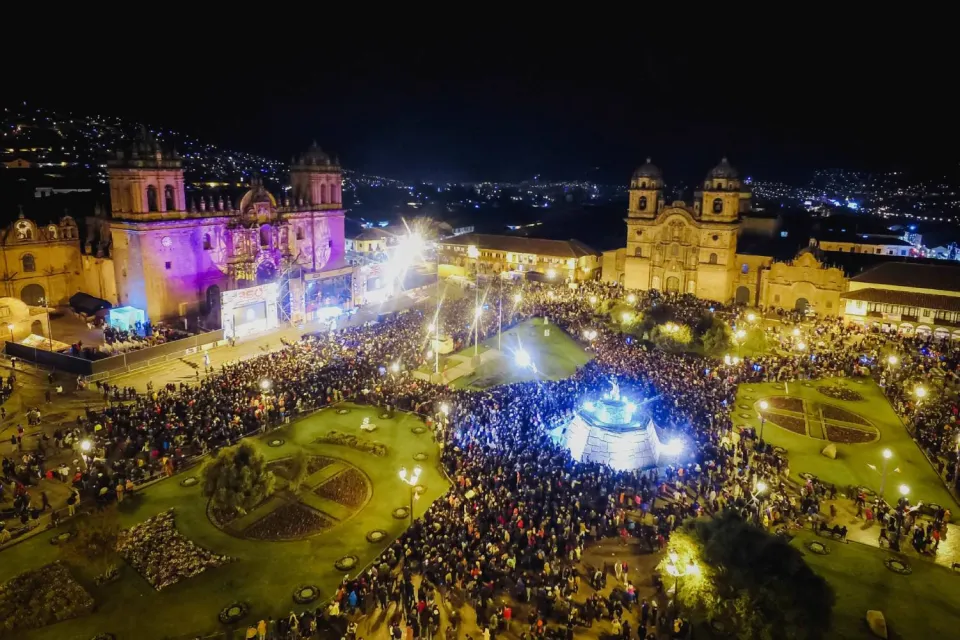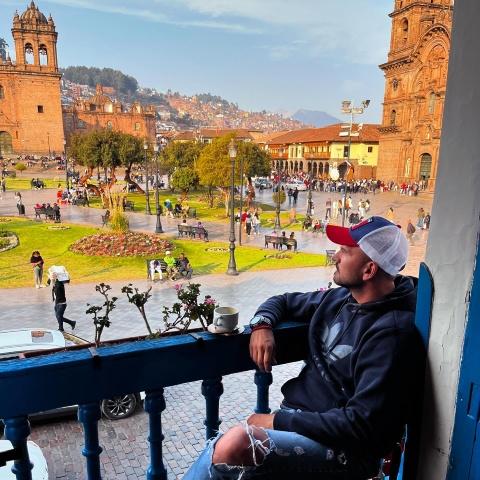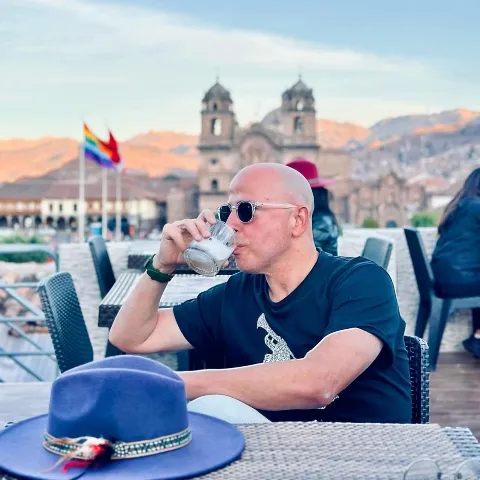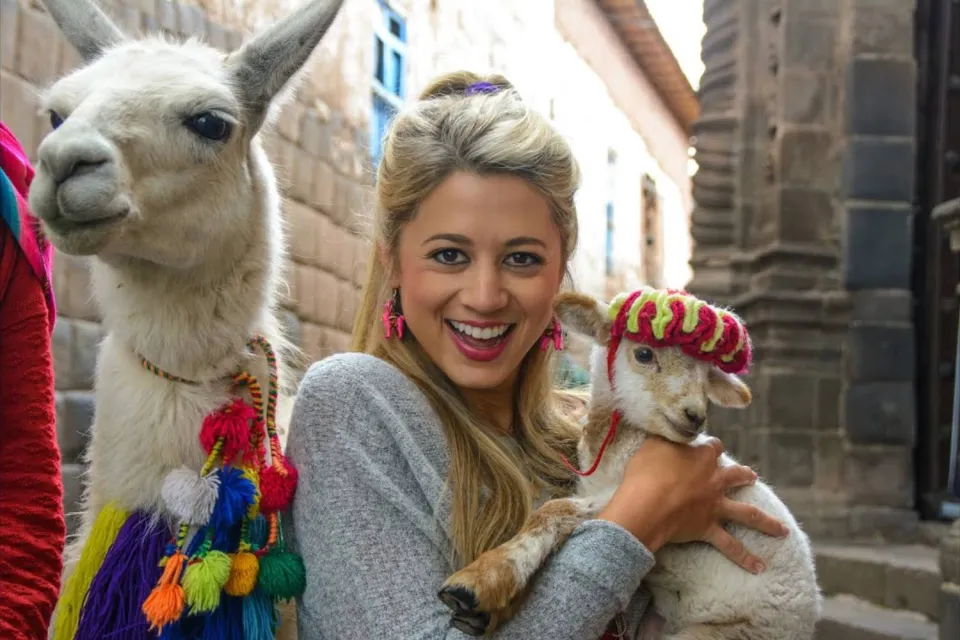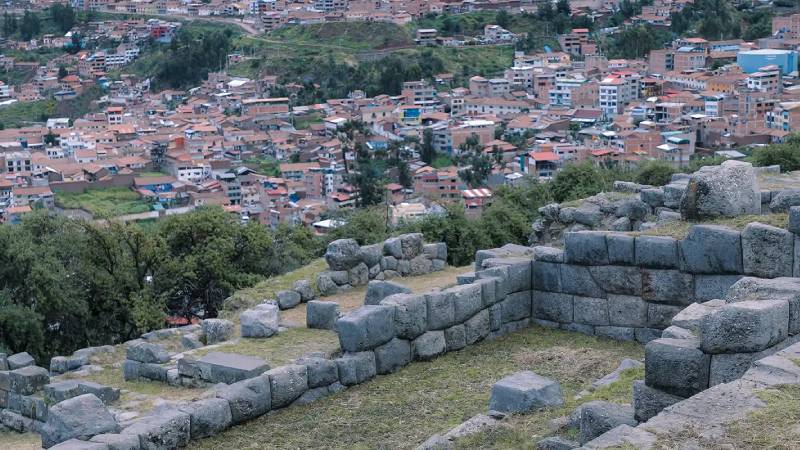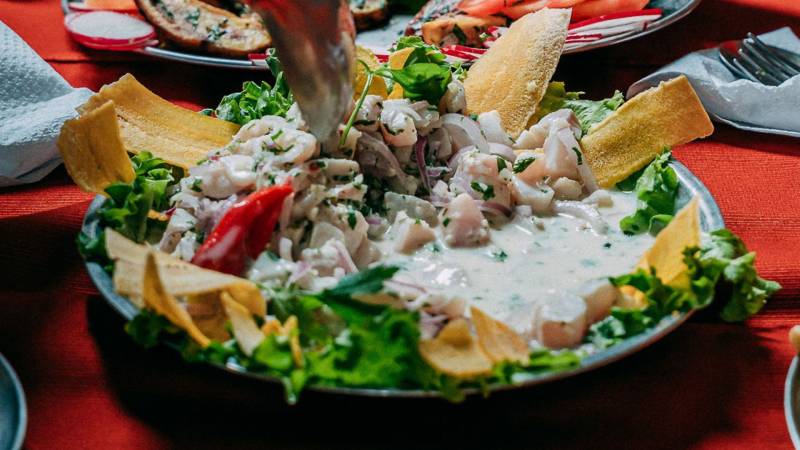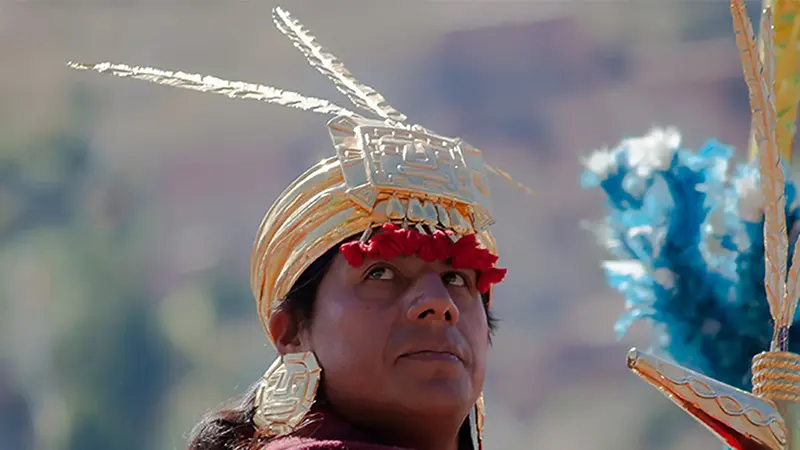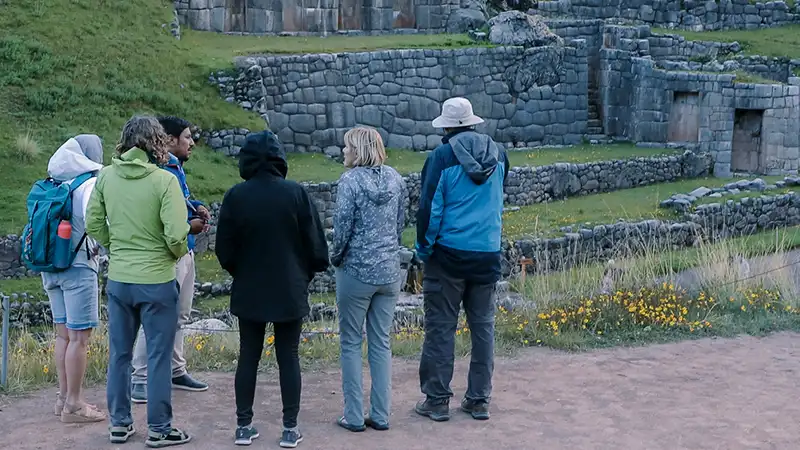Can you imagine walking through a place that has witnessed great victories, rebellions and cultural transformations? Cusco's Plaza de Armas is not just the center of the city; it goes far beyond what you see. From the ancient Inca ceremonies to the traces of the Spanish conquest.
If you are planning your visit to Cusco, this blog is your guide to explore in depth all that the Plaza de Armas has to offer.
Why is Cusco's Plaza de Armas a must-see?
Cusco's Plaza de Armas is a must-see stop for any cultural traveler. This place concentrates centuries of history, art and local life in one vibrant space. It is located in the heart of Cusco's Historic Center, surrounded by cobblestone streets, colonial churches and buildings with carved wooden balconies.
This location is no coincidence. During the Inca Empire, this was the political and religious center of the city. When the Spaniards arrived, they recognized its symbolic importance and built churches over the ancient Inca temples.
Today, the square remains the soul of the city: a meeting point for locals and travelers where history blends with everyday life. From the square you can:
- Admire colonial and Inca buildings.
- Take pictures from any angle, especially from the elevated cafes and restaurants.
- Participate in cultural events such as the Jubilee Month of Cusco, Inti Raymi, Corpus Christi, music festivals and outdoor exhibitions.
Essential information:
- Address: Del Medio 123, Cusco 08000
- Visiting hours: Open to the public 24 hours a day, every day.
- Architectural style: Neocolonial resulting from the fusion of Inca style with Spanish colonial architecture.
- Watch Cusco Main Square live: Live Webcam - Skyline Webcams
What is the name of the Plaza de Armas of Cusco?
The current Plaza de Armas of Cusco received that name during colonial times, as the Spanish used it as a military concentration point and strategic defense.
Colonial historians and chroniclers propose three theories about what this sacred space was originally called, each one supported by different sources and carrying a profound meaning in Quechua:
- Huacaypata: The name comes from the Quechua “waqay” (to cry) and “pata” (elevated place or square), so it translates as “place of crying or pleading”. It was a sacred space where the Incas performed ceremonies to worship the Sun and ask for divine protection.
- Huacapata: The Cusquenian historian Victor Angles refers to it as such and associates it with rituals in which people exhibited the mummies of ancient ancestors and Inca sovereigns (Sapa Incas).
- Huaccaypata: During the colonial period, the inhabitants began to use this variant, which means “enemies‘ square” or “warriors’ square”, reflecting a feeling of loss and cultural invasion.
However, the popularity of the third theory and the general consensus among chroniclers and historians have led to the recognition of Aucaypata as the current name for Cusco's Main Square.
History of Cusco Main Square
The Epicenter of the Inca Empire
Before becoming a square or the heart of the Inca Empire, this place was a wet and swampy land, fed by the springs of the Saphy and Chunchullmayu rivers.
When the Inca Empire was beginning to consolidate, the Inca Sinchi Roca began the urbanization of what is now the city of Cusco. He studied the terrain and built canals to channel the water, thus drying out the area.
Years later, the Inca Pachacutec took the idea of his predecessor and completely transformed the city. He delimited differentiated zones for the Inca elite and for the people.
He selected this space as the administrative, political, social, economic and religious center of Cusco. He surrounded it with important constructions such as the palaces of Huayna Capac, the Palace of Wiracocha, the Acllahuasi and the Yachay Wasi.
During its construction, Pachacutec ordered to bring white sand from the coast of the Pacific Ocean as a symbolic offering representing the connection with the god Wiracocha.
The original plaza was much larger than the present one, approximately 250 meters long by 120 meters wide. It was divided into two main areas: Huacaypata and Cusipata (today known as Plaza Regocijo). In the center was an ushno, a truncated ceremonial pyramid where rituals were performed to the Sun God.
This plaza was also the site of great festivities such as the Inti Raymi, the Huarachicuy and the Qhapaq Raymi.
It was also a center for barter fairs and celebrations of military victories. Priests and nobles also carried the mummies of ancient Incas in procession through this site to venerate them as part of the mallkis cult.
The architectural transformation after the conquest
The arrival of the Spaniards marked a radical transformation of Inca Cusco, and especially of its main square. In order to impose Christianity and eradicate the Inca religion, the conquistadors destroyed several temples to build Catholic churches on their foundations. The Spanish conquistadors replaced many Inca palaces with colonial houses.
They replaced the Acllahuasi with the Convent of Santa Catalina, the Suntur Wasi with a colonial house, and the ushno with a water pool.
Key historical events that marked the plaza
The transformation of the plaza by the Cabildo of Cusco
In 1542, the Cabildo of Cusco, led by Sebastian Garcilaso de la Vega (father of the Inca chronicler Garcilaso), ordered the construction of mansions in the large plaza. He also covered the Saphy stream and divided the square into three parts: the current Plaza de Armas, the Plaza Regocijo and the Plazoleta de La Merced.
In 1545, the corregidor Polo de Ondegardo ordered to remove the white sand from the floor of the square to use it in the construction of the Cathedral of Cusco.
Historical events of Cusco
- In 1536, Manco Inca started the great Inca rebellion from this place, giving way to a bloody war against the Spaniards that culminated in Espiritu Pampa.
- In 1538, the Spanish conquistadors condemned and executed Diego de Almagro in this place.
- In October 1555, the colonists built houses with portals over the Saphy River. That same year, they installed the first water fountain.
- In 1560, they began the construction of the Cathedral of Cusco and the Church of the Society of Jesus.
- In 1572, the Spanish executed Túpac Amaru in the Plaza de Armas as a warning against future rebellions. They decapitated his head and brutally dismembered his body using horses.
- In 1921, the authorities redesigned the square in French style, incorporated gardens and electrified the area.
- After the 1950 earthquake, architects reconstructed the buildings around the square in a neo-colonial style.
- UNESCO declared Cusco's Plaza de Armas a World Heritage Site in 1983.
- In 1996, during the renovation of the basin, a team from the Ministry of Culture discovered three miniatures of golden flames, which are probably vestiges of ancient Inca rituals.
- In 2011, authorities placed the statue of the Inca Pachacútec over the plaza's water fountain.
- In 2014, UNESCO again recognized it as a World Heritage Site as part of the Qhapaq Ñan (Inca Trail).
Today
Today, the Plaza de Armas is the vibrant heart of Cusco, appreciated by tourists and locals alike. It is the scene of the most important cultural and social events of the city.
During the celebrations you can observe the religious syncretism: a mixture of Inca tradition with Spanish influence.
The square is not only visually impressive, but also a living introduction to what Cusco represents: a city that fuses past and present, where history and culture continue to beat.
In addition, it is surrounded by all kinds of commerce, such as restaurants, hotels, cafes, handicraft and souvenir stores that enrich the visitor's experience.
What you didn't know about Cusco Main Square
- Underneath the square there are Inca archaeological remains that are still under investigation.
- Some of the buildings surrounding the square have secret tunnels that connect them to each other.
What to see in Cusco Main Square?
The Cathedral of Cusco
A jewel of colonial architecture, built on the foundations of the Inca temple Kiswarkancha, with stones extracted from Sacsayhuaman. Its construction began in 1559 and was completed in 1654. The Spaniards, with the aim of eradicating the Inca religion, forced the Incas themselves to work as laborers. However, the Incas left their cultural mark by incorporating sacred elements such as a carved jaguar head on the doors of the cathedral.
The architectural style of the cathedral combines Gothic-Renaissance with Baroque touches. Inside, highlights include gilded wood altarpieces, the main altar, important colonial artwork, the bell of Maria Angola, the Señor de los Temblores and a unique representation of the Last Supper, where Jesus shares a guinea pig.
The original Inca temple, Kiswarkancha, was sacred and dedicated to deities such as the Sun God, the Moon Goddess, the stars and the rainbow. It was built with perfectly carved stones and decorated with gold and silver.
The Triumphal Chapel
Located next to the cathedral, this chapel was built over the remains of the Inca temple Cuntur Wasi. It was the first church built by the Spaniards after their arrival. Its name commemorates the Spanish victory over the rebellion led by Manco Inca.
Initially made of adobe, the chapel served as a refuge for the Incas during the siege. The Spaniards interpreted this as a divine sign, which motivated its reconstruction in Renaissance and colonial styles. Inside you can appreciate an altar covered with gold leaf, paintings of the Cusquenian School and a sober facade of carved stone.
The Church of the Society of Jesus
As imposing as the cathedral, this church stands on the former palace of Huayna Capac. Its construction began in 1573 and finished in 1723. It is dedicated to the Virgin Mary and presents a baroque style, with a majestic facade of finely carved stone and an interior decorated with wooden altars covered in gold leaf. Its main altarpiece is one of the masterpieces of Cusco's sacred art.
The Church of the Sagrada Familia
To the left of the cathedral, this church honors Jesus, Mary and Joseph.
It was built to expand the liturgical capacity of the cathedral. Its interior houses richly decorated side altars, carved wood, gold leaf and biblical artwork. The façade presents a Renaissance style with Baroque elements in carved stone.
The water fountain and the Statue of the Inca Pachacutec
In the center of the square is a fountain crowned with the statue of the Inca Pachacutec, a key figure in the expansion of the Inca Empire. In Inca times, in this place there was an ushnu, a ceremonial altar replaced by the colonial fountain.
Frenchman JP Victor Andre designed the current fountain in 1872, and the city of New York donated it, symbolizing a link between the two cities as “centers of the universe.”
Before the present statue, the figure of an Apache Indian was placed, which puzzled even Hiram Bingham, who mentioned it in his writings.
On September 5, 1969, a group of Cusqueños decided to tear it down as an act of Inca vindication.
In 2011, the municipality of Cusco finally placed the sculpture of Pachacutec, although controversy arose because it did not harmonize with the European elements of the fountain.
The portals of the Main Square
The Plaza de Armas is surrounded by eight portals, which were centers of commerce, culture and history. Each one holds a fascinating story:
1. Portal de Belén
Located on the corner of Triunfo Street, it bears the name of the Virgin of Bethlehem, patron saint of Cusco. It was originally Atuncancha, an Inca temple with more than 100 dwellings for priests and mamaconas.
2. Carrizos Portal
At one side of the cathedral, it has kept its name since colonial times. It was a point of sale of totora reeds and wood for roofs. In Inca times, it was part of the Acllahuasi, home of women chosen for religious and state service.
3. Portal of the Company
Built over the ancient Amaru Kancha, a temple built by Huayna Capac and home of the Tumipampa ayllu. During colonial times, it housed a prison and later became the Portal of the Tailors, before receiving its current name due to its proximity to the Jesuit church.
4. Portal of Commerce
It was a center for the sale of luxury textiles brought by Jewish and Spanish merchants. Initially known as the Portal de los Ropavejeros, it changed its name due to the importance of the commerce that took place there.
5. Confectionery Portal
Known as the confectionery for the sale of fried food, especially during Corpus Christi. Its name evolved due to the popularity of traditional sweets in the area.
6. Portal de Carnes
One of the oldest, next to the cathedral. It was known as the Portal of the Commissioner of the Holy Inquisition, and later as Portal de Carnes, because of the fairs where meat was sold. It used to be part of the Coracora Inca court.
7. Portal de Harinas
It was built over the old palace of the Inca Yupanqui, in the area of the RauRau panaca. It was known as Portal de Mármol de Carbajal, in honor of Francisco de Carbajal, “the demon of the Andes”. Later, it became a place to sell corn flour, wheat, chuño and jora, an essential ingredient for chicha.
8. Portal of the Breads
It was formerly the palace of Pachacutec and part of Qasana, home of Huayna Capac. During colonial times, it was used as a prison. Then it received the name Portal de la Cachetada, after an altercation over a loaf of bread. Over time, it became a center of trade of traditional breads, hence its current name.
Loreto Street
It is one of the main entrances to the Plaza de Armas. It was formerly part of the royal roads of the Inca. Walking along it is impressive: its carved stone walls, placed without mortar, show the Inca architectural mastery.
The emblematic places near the Main Square
The Stone of the 12 Angles
Just a few minutes from the main square, on Triunfo Street, is one of the most recognized symbols of Inca architecture: the famous Stone of the 12 Angles. This jewel of pre-Hispanic engineering was part of the ancient palace of Inca Roca.
What makes it so special is its astonishing precision: its twelve angles fit perfectly with the surrounding stones, without the need for any mortar.
Despite the passage of time and the many earthquakes that have struck the city, the structure remains intact, demonstrating the mastery of the ancient Inca builders. It is one of the most photographed places in the historic center and a must for those who want to admire the perfection of Inca architecture.
The Regocijo Square (Kusipata)
A few steps from the Plaza de Armas is the Plaza Regocijo, known in Inca times as “Kusipata”, which means “place of joy” or “happiness”.
During the Inca period, this space was part of the great Plaza de Armas. Today it is an ideal place to rest while contemplating the colonial buildings that surround it, many of which were built on top of Inca structures.
Kusipata is a clear example of the architectural syncretism between the Inca and the Spanish, and retains that quiet atmosphere that invites you to enjoy the leisurely pace of historic Cusco.
Coricancha or Temple of the Sun
The Coricancha, known as the Temple of the Sun, is an obligatory stop for any visitor who wishes to understand the spiritual and cultural depth of the Inca Empire.
Considered the most sacred temple of the Tawantinsuyo, it was completely covered with sheets of gold that shone in the sun. Inside, the Inti (Sun God), the Moon, the stars, the rainbow and other important deities were worshipped.
After the conquest, the Spaniards built the Convent of Santo Domingo on its walls, giving rise to a unique architectural fusion. Today, you can explore its perfectly assembled Inca walls, the famous “three windows” and a small museum that preserves pieces from pre-Hispanic and colonial times. Coricancha is a living testimony of Inca cultural resistance to colonization.
How to get to the Cusco Main Square?
The Main square is located in the historic center of Cusco, which makes it an easy access point. Below, we tell you how to get there from the most common places of arrival to the city.
From the Alejandro Velasco Astete Airport
The airport is located only 20 minutes by car from the Main square. If you have hired a tourist package, most probably it includes the transfer from the airport to your hotel.
If you do not have this service, you have two main options:
Taxis
This is the most comfortable and direct way to get there. We recommend you to go outside the airport to take a cab, as the ones inside the airport are usually more expensive.
Before getting in, agree on the fare; the average fare from the airport to the Plaza de Armas is approximately 15 soles.
Public transportation
Although there is no direct route that drops you off exactly at the Main Square, several buses will drop you off just a few steps away. The routes most used by tourists are Imperial, Correcaminos, Liebre and Satélite.
When you get on, tell the conductor that you want to get off near the Main Square; they will let you know when you are close. The fare is 1 sol.
From the Cusco Land Terminal
The land terminal is even closer, about 15 minutes by car from the Cusco Main Square. From there you can also opt for cab or public transportation.
- Cabs: As at the airport, negotiate the price before getting in.
- Public transportation: You can take buses such as Correcaminos, which pass close to the historic center.
What is the best time to travel to Cusco?
The best time to visit Cusco is during the dry season, which runs from May to September. In these months, the chances of rain are low, which makes transportation and walking around the city much easier.
You will avoid getting wet while waiting for your agency to pick you up, taking a cab or boarding public transportation, especially if you are arriving with luggage.
Activities in the Cusco Main Square
The Cusco Main Square is not only the historic heart of the city, it is also a place full of life, culture and constant movement. Here we tell you what you can do in this emblematic space.
Cultural events
The Main Square is the epicenter of most of Cusco's traditional and cultural celebrations. If you visit the city during a festive date, you are likely to encounter dancers, live music, dances, processions and fairs.
Some of the most outstanding festivities celebrated here are:
- Santurantikuy
- Carnivals
- Corpus Christi
- Inti Raymi
You can join the celebrations without any problem; the locals are used to seeing tourists participating. Just remember to respect traditions and enjoy the festival with respect and joy.
Tip: June is the most festive month in Cusco. If you want to live the cultural experience to the fullest, this is the best time to visit.
Social events
Thanks to its popularity among national and foreign travelers, Cusco organizes social events in the Cusco Main Square for everyone to enjoy. Some of the best known are:
- Lights and Sound
- New Year's Concert
These events are free and open to both locals and tourists. They offer an excellent opportunity to share and celebrate in community, to the rhythm of live music and visual spectacles.
Meet the locals
The Main Square is also a meeting point for locals, who enjoy its beauty and tranquility. If you dare to chat, you can learn about local legends, such as the chinkanas, subway passages that, according to tradition, connect different points of ancient Cusco.
Food and drink
Around the Main Square you will find a wide variety of restaurants, cafes and bars, ideal for sampling the best of Peruvian cuisine. Many of these places offer spectacular views of the square, making them the perfect place to enjoy a meal or a drink with friends or a partner.
Street artists
In several corners and accesses to the main square, it is common to find street artists performing all kinds of music. Their contagious energy encourages visitors to stop, enjoy the moment and even join in the dancing.
Nightlife in Cusco
The Cusco Main Square is open 24 hours a day and maintains an active atmosphere at night. Some tourists take advantage of the illumination to take pictures, while others cross it to go to nearby bars and discos.
Recommendation:
If you are going out at night, be well informed about the places you are going to visit and opt for establishments with a good reputation. This way you will enjoy your outing with peace of mind and avoid unwanted situations.
Tips to enjoy the Cusco Main Square
The Cusco Main Square is one of the most iconic places in Cusco, and to make your visit unforgettable, here are some practical tips to help you make the most of it:
- Arrive early: The early hours of the day offer better light for photos and fewer people, which will allow you to explore with more tranquility and capture the square in its maximum splendor.
- Beware of street vendors: Many are insistent. A polite “no, thank you” is usually enough to stop them from insisting. Don't feel obligated to buy.
- Carry cash: Some nearby churches or museums charge an additional admission fee. You might also want to enjoy a traditional dessert or local coffee at the restaurants surrounding the square, many of which accept cash only.
- Respect sacred spaces: Some churches do not allow photography or have special rules for visitors. Follow the directions and respect the spiritual value of these places.
- Visit nearby museums: Several museums located within walking distance of the square are free or very inexpensive. Take the opportunity to learn more about Inca and colonial history and culture.
- Go slowly: If you are acclimatizing to the altitude, take the time to walk around the plaza at your own pace. Don't rush or overexert yourself, especially during your first few days in Cusco.
- Use sunscreen: The sun in Cusco, especially in the dry season, can be very intense. Protect your skin by applying sunscreen before going out to explore.
- Wear comfortable shoes: The streets of the historic center are made of stone and can be slippery. Wear shoes with good grip or slip-resistant shoes to avoid falls.
- Bring a bottle of water: Stay hydrated during the tour. Drinking water will help prevent altitude sickness and help you cope with the city's dry climate.
- Don't forget your camera: Cusco is a destination full of charm. Capture the details of the square and the cultural activities that take place there, there is always something worthy of a good photograph!
Beware of tourist scams
- Overpriced cabs: Some drivers take advantage of visitors' lack of information. Before getting in, agree on the price of the ride. A trip within the historic center should not cost more than 10-15 soles.
- Photos with llamas or alpacas: It is common to find women dressed in traditional costumes and llamas near the square. Although they may say the photo is free, they will then ask for a tip and, in some cases, may become aggressive if you do not give them money. To avoid misunderstandings, agree on an amount before taking the photo or, better yet, wait to meet these animals in a more appropriate environment.
The Cusco Main Square is not just another attraction. It is the scene of centuries of history, the place where cultures, legends and the daily life of a city that continues to beat strongly converge.
Visiting it with eyes wide open and a willing heart can completely change your experience in Cusco. And now that you know what makes it so special? get ready to discover it for yourself!
Frequently Asked Questions
- Is there free wifi in the Cusco main square?
Yes, you can connect with confidence to the free internet networks that the main square offers. In addition, if you consume something in the nearby cafes, restaurants or stores, you can easily access the free wifi that many of these establishments provide to their customers.
- Can I visit the Cusco main square at night?
Yes, you can visit the main squares at night without any problem. It is a safe area for all types of tourists, as it is usually guarded by Tourist Police patrols. In addition, its night lighting further enhances its beauty and vibrant atmosphere.
- Are there public restrooms in the Cusco main square?
There are no public restrooms inside the main square. However, the closest ones are located at the handicrafts center on Marquez Street and on Choquechaka Street, just after the 12 Angles Stone.
If you need to use a restroom urgently, you can walk into a restaurant or cafeteria and ask for permission; in some cases, they will expect a small tip in return.
- Can a person with reduced mobility walk around the Main square?
Yes, people with reduced mobility can walk around the square without any inconvenience. There are ramps and special accesses in places such as the Cathedral.
However, it is important to keep in mind that the floor is cobblestone, which may make it slightly difficult to move around.
- Are there tours that include the Main square?
Yes, you can join a walking tour or a city tour that includes a stop at the Cusco main square. Also, if you prefer, you can request a guide in English to explain in more detail its history and architecture. This personalized service has an additional cost.
- Are there fast food restaurants in the main square?
Yes, there are currently three fast food establishments: KFC, McDonald's and Starbucks.
If you prefer to try something more local, you will also find restaurants nearby where you can enjoy typical dishes such as rocoto relleno, lomo saltado or aji de gallina.
- Where can I take the best photos in the Cusco main square?
You can take excellent photos from the cafes and restaurants located on the balconies of the square. There are also strategic points within the plaza itself.
If you are looking for a more panoramic view, go up to the San Cristobal viewpoint: from there you will get a perfect postcard view of the entire historic center.
- Are there ATMs in the Main square?
Yes, there are several ATMs located inside the square itself and in adjacent streets. They are available for different national and international cards, which facilitates access to cash at any time.
- How much does it cost to enter the Cusco main square?
The entrance is totally free. You can walk around it without paying and visit public spaces. However, if you wish to enter the bell towers or museums inside the churches, you will have to pay an entrance fee.
- Can I take a free walking tour?
Yes, in the square you will find guides offering free walking tours. They usually wear distinctive colored uniforms and are properly identified. At the end of the tour, they will ask you for a voluntary tip as a form of thanks.
- Does public transportation pass through the main square?
You can take a cab directly to the square, but public transportation buses do not enter the square. They will drop you off in nearby streets, from where you can walk a few minutes to the center of the square.


